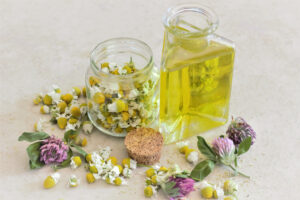
Essential oil – a rapidly growing market
By Clive Larkman
The essential oil market is huge and growing rapidly, with an expected value of $US10 billion by 2025. Some reports are even predicting that it could be in excess of $US20 billion by 2027. This increase has its roots in a range of reasons, one of which is COVID-19, but overall, the whole sector is expanding.
The essential oil market is huge and growing rapidly, with an expected value of $US10 billion by 2025. Some reports are even predicting that it could be in excess of $US20 billion by 2027. This increase has its roots in a range of reasons, one of which is COVID-19, but overall, the whole sector is expanding.
(Text)
Essential oils and their use in food and medicine goes back well over 2000 years. However, for most of that time, the majority belonged in the world of alternative medicine and food. Over the last 100 or more years, their usage has grown in parallel with the commercialisation of food and medicine production. This has been due to their ability to add flavour and fragrance, from a small percentage constituent. With the addition of a small amount of an essential oil, a manufacturer can have a strong input into how consumers relate to the product. We only need to walk down the detergent aisle in the supermarket. Our noses are assailed by a cacophony of fragrances from all the scented cleaners. In any one of them, the percentage of lime, or lavender or pine oil etc is tiny.
Essential oils, and their use in aromatherapy and alternative medicine, has given them a romantic allure. They are popular amongst many people who like to live aside from mainstream thinking. Unfortunately, this has resulted in them being attributed with curative properties that are vague at best, and crazy at worst. Even so, essential oils are now commonly used in many massage and beauty businesses. With the development of safe electric oil diffusers, many people are using the oils to freshen their homes and to help with sleep and anxiety.
The advent of COVID has made many people more aware of their surroundings and what goes into their bodies via food, medicine or contact. This has highlighted the use of synthetic flavours and fragrances in the food we eat, the medicine we take and the cleaning agents we use on our bodies and in our homes. The lockdowns, and reduction in our ability to travel, has given people a lot more time to research these inputs and see what is and isn’t safe. The way COVID has evolved has helped build a fear and distrust of laboratory created products.

All these issues have helped drive the desire for essential oils. At the same time, there has been a worldwide movement towards products created in an environmentally sustainable method, and there has been a push for ethically farmed and processed products. These last two issues have helped drive a demand for Australian essential oils. The biggest of course has been Tea Tree oil, and we have a large industry producing good quality, pure and non-adulterated oils. Some of the other oils attaining popularity in Australia are Kunzea oil, Boronia oil, Rosemary and Geranium oils, Sandalwood oil and a wide range of other minor oils. Finally, we are developing a great Lavender oil industry that is arising out of decades of cottage-based lavender businesses. Most of our oils are used in Australia by the perfumery and aromatherapy sectors.
All these oils are great fragrances that are popular in a range of personal products. However, there are over 100 popular oils and a dozen or so that are traded as a commodity. Like any subjective review, the top 15 is up to some level of debate. The most commonly sold oils for a range of commercial uses are listed below. The oil name, Latin name and generalised use are:
Bergamot – Citrus bergamia – Aromatherapy and food
Cedarwood – Cedrus atlantica – Aromatherapy and medicinal
Chamomile – Chamaemelum mobile – Aromatherapy, perfumery and teas
Clove – Syzygium aromaticum – Aromatherapy, medicinal and food
Cypress – Cupressus sempervirens – Aromatherapy and medicinal
Eucalyptus – Eucalyptus polybractea – Aromatherapy and medicinal
Frankincense – Boswellia sacra – Aromatherapy, perfumery and medicinal
Geranium – Pelargonium graveolens – Aromatherapy, perfumery and medicinal
Lavender – Lavandula angustifolia – Aromatherapy, perfumery and medicinal
Lemon – Citrus limon – Food
Orange – Citrus sinensis – Food
Peppermint – Mentha x piperita – Medicinal and food
Rose – Rosa x damascene – Aromatherapy, perfumery and medicinal
Spearmint – Mentha spicata – Aromatherapy, medicinal and food
Tea tree – Melaleuca alternifolia – Aromatherapy, medicinal and food
Each one of these oils has its own set of uses and the worldwide demand varies from 100 to 2000 tons annually per variety.
The range of oils is huge, with yields that range from fractions of a percent to several percent. The importance of the oils to the world economy and to our lives in general is phenomenal and greatly underestimated. Keep an eye on the evolution of essential oils, their usage by the wider community and their importance to the Australian economy.
